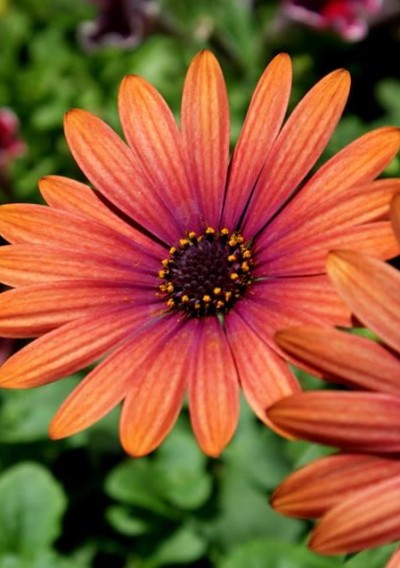Loves It Hot and Dry
Dimorphotheca (dye-more-foe-THEE-kuh) is commonly referred to as African Daisy or Cape Marigold. Native to arid regions of South Africa, it's fast growing and seems to sprout from nowhere after a heavy rain.
If you live in the west where it's hot and dry, these beautiful silk-like daisies in lovely pastel shades of yellow, pale orange, pink, and white with their dark centers should do very well for you.
If you live in a hot humid area like I do, it's going to be a bit more touch-and-go. But I assure you, the display is well worth the effort.
How I Discovered African Daisy
I started gardening in the early 80s. My Grandmother was still alive then and lived in Idaho with my Uncle. One of her favorite flowers was the African Daisy. It was a regular in her flower garden. She saved seed and sent them to me.
I scattered them in my garden borders and they made a glorious display for me, seemingly bringing Grandmother and her garden across the miles to visit me.
I saved seed and planted the following year, but didn't have good results. As the humidity climbed, the plants were short-lived.
Planting
After all these years, I finally have an opportunity to try them again.
Living in an area that is hot and humid in the summer, ideally, I should have scattered them throughout my borders a week or so before the average last frost date. But, as I'm sure you can relate to, time slipped by quickly and that window of opportunity was missed.
Day before yesterday, I scattered them in places where the straw mulch was thin and the seeds could make contact with soil. I chose places amongst groupings of other plants like sedums, daylilies, and ornamental grasses with the thought that their foliage would enhance the daisies in bloom, but conceal the fading foliage when high humidity arrives.
Since they take about 2 weeks to germinate at 60 to 70 degree temperatures, my timing might be perfect. And the Farmer's Almanac forecasts we should get some rain about the first of May and some cool enough weather that may allow these beautiful daisies to make a show, before the hot humid weather arrives.
Best Variety?
As with most plants, there are many varieties of African Daisy. Demorphotheca Sinuata, known also as star of veldt, is reported to rate as a top performer because of its resistance to heat coupled with humidity.
I hope it's the same one my Grandmother sent to me many years ago. In any event, I think it's definitely the best for a hot and humid location.
Long Blooming?
If you live in an area without high humidity, African Daisy plants in full sun can bloom extravagantly all through summer and fall until the frost gets them.
If you live in an area that never has frost, you could get winter bloom!
Dead head as soon as flowers fade to prolong the bloom, if you're fortunate enough to live in one of those areas that supports long-term bloom.
Can You Get Them at Garden Centers?
Probably most garden centers carry at least one variety of the African Daisy.
Would I buy them there? Probably not.
Why? Just because I want their sparkling bloom in the profusion that only seeding makes possible at a price anyone can afford.
Can It Be Even More Appealing?
To make it even more appealing, African Daisy will self seed but is not invasive.
Final Thought
So you won't be surprised, expect this lovely flower to close its petals tightly once the sun leaves it for the day. When you want to show them off to friends, make sure it's not a cloudy or rainy day and that the sun is out to work its magic to keep these delicate beauties open and on display.
Theresa Martz has been growing flowers and vegetables organically for almost 40 years. She's found ways to make her flower borders beautiful and keep them beautiful with very little work and little expense.
All the information you need to accomplish the same is found in her book Organic Gardening - Cutting Through the Hype to the 3 Keys to Successful Gardening available at http://tendingmygarden.com and in part on http://flowerborders.info. Visit to learn her secrets.






